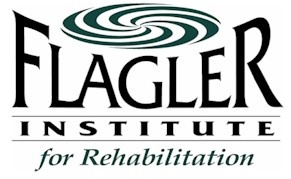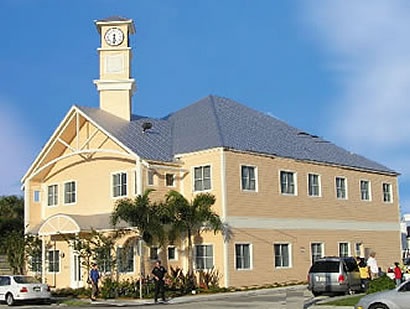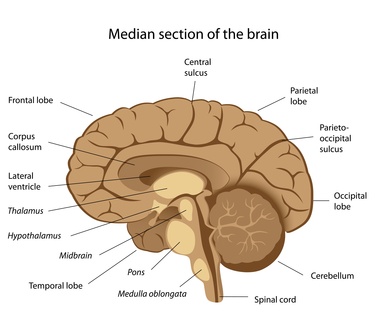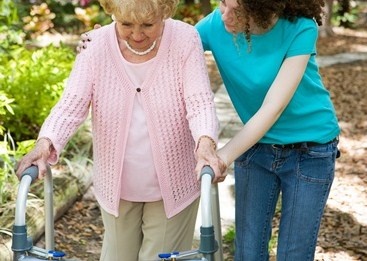 | |
|
Our New State of the Art 6600 square ft
facility
|
|
 | |
|
Physical Therapy Helps!
|
|
|
The Connection Between Stroke and Physical
Therapy
|
|
|
A stroke can
affect men and women of all ages and carries with it damaging and potentially
life-threatening complications.
 Simply stated, a stroke refers to an
unexpected loss of brain function that occurs when blood flow to the brain is
interrupted or when blood vessels in the brain rupture.
When the blood flow is affected, the brain cells in the affected area
die, and this can cause long-term damage. Simply stated, a stroke refers to an
unexpected loss of brain function that occurs when blood flow to the brain is
interrupted or when blood vessels in the brain rupture.
When the blood flow is affected, the brain cells in the affected area
die, and this can cause long-term damage.
Depending on
the area injured, a stroke can cause an individual to lose his or her ability to
see, speak, read or write, along with loss of memory or an impaired thought
process. Also, movement is limited to partial or full paralysis. The slightest
of delays in blood flow can cause damage to the brain.
The
longer the brain is without important nutrients and oxygen carried by the blood,
the higher the risk of permanent damage.
So, what are
the risk factors of stroke?
They are high
blood pressure, high cholesterol levels, certain heart conditions, diabetes,
obesity, smoking, stress, and drinking too much alcohol. In addition women are
subject to an extra set of risk factors, such as menopause and hormonal changes,
as well as conditions associated with pregnancy and the use of birth control
pills. A low activity level has further been linked to stroke risk, bringing yet
another benefit to regular exercise.
Fortunately,
you can identify a stoke early through FOUR MAJOR WARNING SIGNS and potentially
decrease the severity of the damage:
Each of these
warning signs can occur alone or in any combination. So, learn and remember the
list. Remember, timing is key. Getting treatment quickly can help counteract the
damaging effect of a stroke. So if any of these warning signs occur, be sure to
get medical attention immediately!
| |
|
Impact of a Stroke
|
|
|
Knowing the
warning signs of a stroke can not only save your own life, but that of someone
close to you as well. In fact, most of us know someone who has suffered a stroke
and have seen its damaging effects.
Share this
information with members of your family, especially those who are aging, and you
just may save a life.
| |
|
Physical Therapy and Stroke Recovery
|
|
 You may not
expect physical therapy to play an important part in stroke recovery, but it is
often referred to as an indispensable tool. While there are other types of
stroke rehabilitation, including speech and occupational therapy, physical
therapy specifically addresses physical damage. Of course, the type of
assistance necessary depends on the type of damage that is
present. You may not
expect physical therapy to play an important part in stroke recovery, but it is
often referred to as an indispensable tool. While there are other types of
stroke rehabilitation, including speech and occupational therapy, physical
therapy specifically addresses physical damage. Of course, the type of
assistance necessary depends on the type of damage that is
present.
As physical
therapists, we are trained to teach strengthening exercises to retrain the body
following a stroke. Using a series of
custom-designed stretches and exercises, we can help a stroke victim broaden his
or her range of motion, build muscle, and increase endurance.
Before establishing a treatment plan, we test the stroke victim’s current
levels of motion, strength and endurance, and use this valuable information to
create a plan that best suits the individual.
Word
of Caution:
Never
underestimate the range of treatment provided by your physical therapist. Even
if the stroke victim is suffering from partial paralysis or weakness as a result
of the stroke, physical therapy can prove to be very beneficial. In the case of
paralysis, we can teach the stroke victim ways to compensate for the loss, in
addition to prescribing treatment for the affected limb(s). For stroke sufferers
forced to combat ongoing weakness, physical therapy can help to strengthen the
extremities as a long-term solution.Physical therapy plays an integral role in
stroke recovery. If you or someone you know has
suffered a stroke, contact your physical therapist now to open a new door to
recovery.
| |
Friday, March 1, 2013
Stretching at work.
Subscribe to:
Post Comments (Atom)

No comments:
Post a Comment